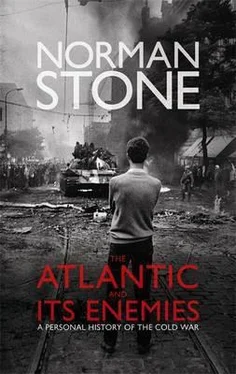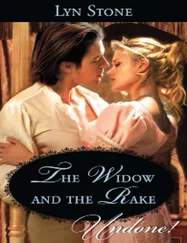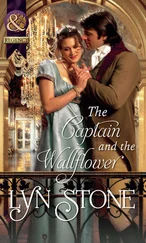In effect there were two or perhaps even four economies at work in the Özal era, apart from the criminal (drugs-related) one. Exports did very well indeed with the reduction of corporation tax and tariffs. They accounted for one fifth of GNP in 1989, more than double what they had been ten years before, and considerably more suitable for a country without oil. Export earnings grew at almost 20 per cent annually, from 1980 to 1988, which was all the more remarkable as world trade slowed in the early part of that period. Their character also changed. In 1976, agriculture had accounted for two thirds (just over a billion dollars) but by 1989 18 per cent ($2.1bn). Industrial exports rose from one third ($600 million) to four fifths ($9bn) and manufactures accounted for nearly all of this, as distinct from half-finished items. Textiles accounted for half, followed by chemicals and then steel, of which Turkey had hardly supported any in the 1970s, despite the enormous Karabük plant. Now, Turkey’s exports were worth $1.5bn, an astonishing feat, given where she had started from. There was also a change of direction. The Middle East took more, in volume, but much less, in proportion; OECD countries, and especially Germany, now took two thirds of the exports. It became quite common for representatives of Turkish businesses to travel the world, probing markets — not a feature seen by the world since the later sixteenth century. Turkey could now, at least on economic grounds, advance her candidacy of the European Common Market which had been tabled as early as 1963; Europe in 1981 had accounted for about a quarter of trade, but by 1995 well over half ($28bn). In fact she weighed more than all other candidate countries put together, and then some. The same had of course occurred elsewhere, especially with Japan, in the fifties, and South Korea and Taiwan in the sixties. Was Turkey now catching up, and why had it taken her so long? The short answer was: other ‘miracles’ had had an American occupation. Turkey had a semi-demi American occupation, and Özal was its symbol. Overall it had been a great success, but the price was debt — the international one rising from $13.5bn to $40bn, interest on which took 70 per cent of export earnings. By 1997 the World Trade Organization was optimistic about Turkey — noting that exports had grown by 11 per cent per annum as against a general 7 per cent. The Istanbul stock exchange, trading $300m every day, was among the top four of the ‘emerging’ ones; imports at $67bn, and exports at $57bn (including the estimated $10bn-15bn to Russia) were creditable, especially in the light of Turkey’s past. The Bosphorus was three times busier than the Suez Canal.
Americanization was the watchword, and not one greatly liked by the old republican establishment. It stood for a sort of Turkish sixties, and in not dissimilar circumstances — in 1980, 60 per cent of Turks had lived on the land, and there was then a great flight, as happened a generation before in Italy or Spain — and it happened at every level. There was insider dealing in politics, and Özal’s own family was involved. The Emlak Bank would make loans, its manager taking part of the proceeds, where no other bank would have lent; eleven state banks gave out loans that no private bank could have contemplated. In the cities there was illegal building, some of it of such poor quality that it collapsed in earthquakes that left stoutly built housing blocks unimpaired. Özal just waved such corruption aside: to him, as to others of his way of thinking, it was less expensive than honest but idiotic state wastage. But the Westernization of Turkey went ahead in other ways. Students went to the West in great numbers — 25,000 to the USA. On the military and scientific level, the co-operation was intense: in Britain and the USA there was a substantial Turkish professional emigration, whereas in continental Europe ‘the Turks’ were, on the whole, of rural origin.
Private business might flourish, but much of the economy was still in the hands of the State. This was the same unhappy business as elsewhere — 2 million workers retiring early and underproducing, in factories varying in output from steel to pickles. Public enterprises undertook about a third of manufacturing. The State owned over half of the usable land, i.e. excluding mountain and forest, and there were a million farms and small plots, many simply squatted. The army owned almost one fifth of Ankara (often distinguished by tree-planting, sign of a military presence), and there was famous clientelism at work, with soft loans. Özal himself believed in privatization but this was difficult — it even constituted a vicious circle. There was not enough capital in Turkey; it could only come from abroad; but because of inflation, and perhaps also opaque business practices, this would not happen until finances had been stabilized, which could only happen through privatization. Otherwise the budget deficit just went on and on, worsening in 1986 when ANAP spent money for the election (in which its vote fell to one third, although this meant two thirds of the seats). Privatization did not happen — or at any rate only on a small scale (under $3bn in eleven years). Meanwhile, state managers became demoralized; there was not much investment (and the railways especially suffered, though the resulting lengthy journeys could be romantically old-fashioned). The Zonguldak mines (employing 30,000 people) would have cost less had they simply been closed down; meanwhile, foreign investment banks for some time made fortunes out of advice to then naïve Turks, and nothing much followed. Özal’s one real contribution was a build-operate-transfer system for capital projects, by which foreigners could make their profit for some years before transferring the project to the State (as happened with the Bosphorus Bridge).
The Özal years split the country. The foreign trade element had done enormously well, and continued to do so; and this was far from being just a matter for Istanbul and İzmir, as there were places far to the east, such as Antep, that were lifted off, and the new motorways through Kayseri, the chief town of Cappadocia, to the east and south became arteries of European trade. The perennial question, as to whether Turkey could become a member of the European Union, was debated endlessly at ministry level, but it was in effect being settled by voting with feet, or at any rate wheels. Maslak, where once, during the Crimean War, the French army had trained on the European shore of the Bosphorus, saw one Manhattanish skyscraper rise after another, and the multinational hotels also built. It meant the ruin of parts of the city, an especially scandalous instance being the destruction of the old Park Hotel, next to the former German embassy in Gümuşsuyu. It had been a Pasha’s house, had been turned into a grand hotel, and in its place half of a gruesome car park went up until it was stopped. The counterpart was that, as the money poured in, so did migrants. The city became, like Mexico City, a megalopolis, and although old Stambul survived, it was squashed in with concrete or clapboard suburbs, each taken over by a region in the east. It was a demonstration of the trickle-down effect, in that the crumbs from the tables of Maslak rolled down into Sütlüce, and the parking arrangements of Galata were taken over by a Kurdish mob from Bitlis, near Lake Van.
The later years of Özal have a shadowy resemblance to the later years of Margaret Thatcher, when the machine ran beyond the monetarist desert and entered upon richer and much more intractable soil. The real parallel for this is Italy, in the Christian Democrats’ blue period: a veneer of piety, and the sound of the till. ‘Social control’ was maintained by Islam, but the ANAP itself split, on religious matters: at a conference, the culture minister even fought a very large minister of state as to whether the Aya Sofya should become a mosque again. Özal, putting in his wife as chairman of the Istanbul branch, distanced himself from the kutsal ittifak element, the ‘holy alliance’. There had always been an element of Islam to the Özal mixture, and it sometimes seemed to be taking over — for instance, in 1988-9 the old question, whether women should be allowed to wear head-coverings in universities, came up, a matter of vast symbolic importance that Özal himself preferred not to take up: he said, just leave the question alone, dealing with it is for later. His supporters wanted their girls to be virgins when married, and (in theory) thought drink the mother of all evils. There was another side to this, perhaps Iranian in origin: secularists were assassinated, and even Moslem modernizers. By 1989 the ANAP was down to one fifth of the vote in local elections, Inönü’s (renamed) SPP taking nearly one third; the ANAP majority was now artificial. By 1991 new elections put Demirel ahead of ANAP by under a quarter, and bizarrely he struck up an alliance with another old dispossessed party, the SPP (‘Socialist’ etc.), now renamed Republican (CHP), and this introduced a period of political kaleidoscopes, governments of various coalitions succeeding each other until 2002, when a sort of Islamicized (and American-leaning) version of ANAP appeared, as the Justice and Development Party. Özal had really failed with the resumption of inflation in 1986, and the clash of the external and internal economies. The same had happened with Margaret Thatcher, and, like her, he now made his reputation in foreign affairs. However, Turkey had some real weight, not least as the only Moslem country in the world, apart from Jordan, with serious credentials (as a wise historian, Hasan Ali Karasar, remarked, ‘Islam, politics, economics — choose two’). How would she use it? The most imaginative answer would have been the annexation of northern Iraq, on the lines of the National Pact that had been pushed by Mustafa Kemal sixty years earlier.
Читать дальше












![Edward Ellis - Adrift on the Pacific - A Boys [sic] Story of the Sea and its Perils](/books/753342/edward-ellis-adrift-on-the-pacific-a-boys-sic-s-thumb.webp)